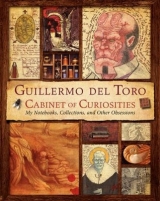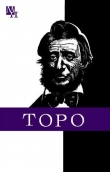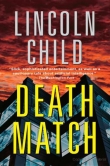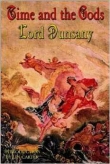
Текст книги "Cabinet of Curiosities: My Notebooks, Collections, and Other Obsessions"
Автор книги: Guillermo del Toro
Соавторы: Marc Scott Zicree
Жанры:
Публицистика
,сообщить о нарушении
Текущая страница: 12 (всего у книги 17 страниц)
PAN’S LABYRINTH

Vidal (Sergi López) threatens Ofelia (Ivana Baquero).

An illuminated drawing depicting the Faun, the princess, and the labyrinth.

Concept of the Pale Man by Raúl Monge.

Notebook 4, Page 6A.

Ofelia (Baquero) in the forest.

Concept of the main monolith by Monge.

Concept of the pit where Ofelia encounters the Faun in Pan’s Labyrinth by Raúl Monge and Raúl Villares. Sketches from del Toro’s fourth notebook.

Study for one of the frescoes in the Pale Man’s lair by Carlos Jimenez.

Concept of the subterranean city where Ofelia’s parents reign by Raúl Villares.
PAN’S LABYRINTH REPRESENTS Guillermo at the crossroads, “trying to redefine my life, creatively,” and choosing the right path—one of his own devising that led to a movie he needed to make. At this point in his career, he was turning down many top Hollywood offers, films that would have netted him millions of dollars. Instead, he chose financial struggle and artistic triumph.
In Pan’s Labyrinth (2006), everything Guillermo had been working toward came together in a grand panoply that is by turns brutal, gentle, intimate, and majestic. The notebooks he kept during this period reveal his consuming passion for the project. As he evolved the storyline and visual world of Pan’s Labyrinth in the notebooks, he laid bare all the specifics of the film, like a photograph emerging in a developing tray. He reflected on casting, historical background, specific shots, dialogue, sets, characters, costumes, and creatures. In these pages, Pan’s Labyrinth comes alive in glorious detail.
As Guillermo notes, paraphrasing and building on Heraclitus, “One never bathes in the same river or sees the same film twice.” He considered possible variations of every element of Pan’s Labyrinth and struggled to determine “which would the public understand more readily?” In this, Guillermo clearly grasps the difference between presenting mysteries that intrigue and beguile and simply failing to communicate one’s intent and confounding an audience.
“It’s only through art that you’re able to glimpse otherness,” Guillermo wrote, and everything we see in these detailed sketches and notations serves the goal of helping us see the alien as personal, familiar, and meaningful. In our daily lives we often insulate ourselves from what is unlike us, viewing otherness as threatening and ultimately rejecting it. But safe in our homes and theater seats, Guillermo’s art encourages us to consider the repulsive and the rejected with compassion and empathy—to expand our definitions of ourselves by encompassing the range of human (and even inhuman) experience.
In the case of Pan’s Labyrinth, Guillermo ruminated on plot motifs drawn from folk and fairy tales and classic children’s literature—enduring rites of passage that help children make sense of strange and unfamiliar things. Some of the imagery this evoked, such as the mandrake root that comes alive, remained virtually unchanged from notebook to film. On the other hand, the loathsome, terrifying Pale Man morphed from a wooden doll in a tree to an old man with eyes floating queasily in liquefied flesh, to the figure’s final, unforgettable state as a visionless face with eyeballs snatched off a plate and inserted into stigmata wounds in its palms.
Lost along the way, but captured in these pages, are such tidbits as children “that the well swallowed up,” a changeling brought by elves to replace the baby they’ve stolen, gold rather than food arrayed on a tabletop to lure Ofelia, and perhaps most disturbing of all, “the dead children who eat fairies.” Any of these items might have worked individually, but the totality would have presented a storyline that was “ungainly,” as Guillermo puts it. His goal was to craft a film of elegance and inevitability.
Even in his marginalia we see his concern over making “the other” intelligible, as Guillermo grappled with translating the title of the film into English. He strove for more recognizable and compelling wording for an American audience and eventually settled on Pan’s Labyrinth—although Pan is nowhere to be found in the film.
Everything in Pan’s Labyrinth is rich with multiple shades and layers of meaning, including the main character’s name, Ofelia (Ivana Baquero), which hearkens back both to Hamlet’s dreamy, doomed lover and to the daughter of Roald Dahl, one of Guillermo’s favorite writers. Taking shape in these pages are such iconic images as the ominous dead tree with its “fallopian nature”; Ofelia’s dress, like Alice’s “but with different colors”; and the Faun, who at first looks like a muscular, goatish variation on Hellboy before becoming the lean and lyrical being in the film. Indeed, throughout these pages, Guillermo was also hashing out Hellboy II: The Golden Army, which he was writing at the same time, while “working on deadlines, juggling projects.”
When jotting these notes, Guillermo continually reminded himself to take courage, to stand for exactly what he wanted in all things. This included selecting American actor Doug Jones, previously Abe Sapien in Hellboy, as “the only guy to play the Faun” (Jones also played the Pale Man in Pan’s Labyrinth with equal brilliance). Only their collaboration could have created the Faun, but that decision meant paying more than a Spanish actor would have cost and dubbing all Jones’s lines in Spanish with another performer’s voice. When Jones was offered and turned down films in the X-Men and Men in Black franchises, choosing instead to complete Pan’s Labyrinth, Guillermo triumphantly wrote: “2007… It’s my year: Guillermo del Toro.”
Even the briefest notations in these pages lends a deeper insight into the finished work, as in the passage, “Faun has a flute made from a thigh bone.” Again, here is the beautiful and the grotesque in a danse macabre, blurring together, becoming one and the same. Elsewhere he jotted one of his finest epigrams: “I believe in two things: God and time. Both are infinite, both reign supreme. Both crush mankind.”
Guillermo’s obsessions and grand themes are rendered in his notebook with masterful control and consideration. As in Cronos and later in Hellboy II: The Golden Army, clockwork mechanisms figure prominently, in this case the workings of a pocket watch mirrored in the oversize gears of a mill. “We ended up using them in the mill to represent the captain being trapped in his father’s watch,” Guillermo observes of this man obsessed with remembrance. “But I find gears really fascinating,” he adds. “They represent, I think, the mechanism of the universe, cyclical nature, the inexorable.”
In Pan’s Labyrinth, as everywhere in his oeuvre, Guillermo’s villains appear in vivid detail—evil, real, dreadful. No detail is too small to escape his scrutiny, including a description of what the villainous captain wears: “coat on his shoulders, gloves, glasses… hair parted in the center, patent leather shoes.” Finally, the watch, the glass of which he shatters to preserve his time of death so that he can be remembered by his son—an action that ultimately proves futile. Taking pains to show us his villains’ longings and their scars, both emotional and physical, Guillermo does not mean to excuse their terrible actions, but rather to reveal the human in the monster and the monstrous in the human.
Disrupting expectations, juxtaposing opposites, contrasting the fantastical with taken-for-granted reality: This effort to illuminate both what we refuse to see and what we blindly look past drives Guillermo’s work. The most profound juxtaposition in Pan’s Labyrinth is between the very notions of fantasy and reality. Guillermo took great pains to design visual metaphors that differentiate these two worlds. He noted in his journal: “The real world is made of straight lines, and the world of fantasy is curved. Reality is cold. Fantasy is warm. The fantasy world should feel UTERINE, INTERIOR, like the subconscious of the girl….” Guillermo’s film gives audiences intimate contact with an interior life—the world that must be believed to be seen.
The Pan’s Labyrinth journal entries also include another startling juxtaposition—the presence of someone else’s handwriting in these most personal pages. This guest contributor provided Guillermo with the film’s first review, letting him know how the great gamble of Pan’s Labyrinth had turned out. Written when the film was completed, on the day Guillermo screened Pan’s Labyrinth for his favorite living writer and that man’s son (another writer of note), the note says simply: “WE HAD A BLAST!! Steve King.”
Mr. King and his son were not alone. Pan’s Labyrinth was lauded far and wide, both within the industry and among audiences. The film won Oscars for art direction, cinematography, and makeup, netted an Oscar nomination for Best Foreign Language Film, and became the highest-grossing Spanish-language film ever released in the United States. Most satisfying of all, this acclaim rewarded Guillermo’s fidelity to his own values and aesthetic, or as he concludes: “I didn’t have to do a serious piece about Edwardian drama to be nominated for an Oscar.”

NOTEBOOK 4, PAGE 5A
Del Toro drew inspiration for the main building in the film from the chimneys characteristic of the historical architecture of the Pyrenees.
–“Don’t get me wound up, animal… don’t push me”
–They use the binoculars to spy on the police officers who arrest the fighter from the train. They can make them out perfectly.
* Julio Vélez, a good actor to play a civil guard. Thin.
–Hellboy calls the new agent “Lil’ fella” or “squirt.”
–Abe has “insight” that they are very weird “Kidney.”
–When I was a boy, I could feel them in my bones. My hand.
–The spotlight doesn’t work. Would there be electricity?? In the middle of the countryside??
–High Relief Portico, LEDGE, CORNICE, Pillar, Post
–Chimneys in the Pyrenees.
–One never bathes in the same river or sees the same film twice. Memorable TRUEBISMO #1
–Ofelia has: a very slight hunchback DDT or a lame leg (?)
–Take your hat off when you speak to me you goddamn son of a bitch!!
–Production Designer: Martin Childs for HB/MoM.
–Maria Portalez Cerezuela is the name of B.’s mother.
–What Vidal keeps in his safe must be SEEN (dry sausages).
–Crown/how much, sleeps, fire in the window, the house awakens, labyrinth. enter (stable-ish dynamite). It’s you. It’s you. Here we go.
–The wooden man instead of the ghosts
–They prick her cheeks to give them color.
–Art Director: WOLFGANG BURMANN
–In some stories, elves replace people with wooden logs that turn into human beings the next morning.
–She has a shoe catalog that belongs to her father.
–Don’t open your mouth or make a sound or you’ll remain there with them forever. Forever.
–The old, blind man’s name is Benigno and he’s the girl’s father.
–Benigno knows the house and labyrinth inside out. He tells Ofelia about the children that the well “swallowed up” and about how nobody ever saw them again.
–Mercedes and the old man need to be seen doing “what they do” without it having anything to do with the plot.
–I had a dream and I know I’m not his daughter.
–Vidal has a gold cross or a rosary hanging from his neck.


This reference was carried through in the design of the mill seen in this production artwork by Carlos Jimenez.
 GDT: I did a lot of research on the architecture of northern Spain while working on Pan’s Labyrinth because the north of Spain is very peculiar. It has sort of a fairy-tale feel, both the northeast and the northwest. Whether you’re in Galicia or on the border with France, either way you get these lush, cold forests.
GDT: I did a lot of research on the architecture of northern Spain while working on Pan’s Labyrinth because the north of Spain is very peculiar. It has sort of a fairy-tale feel, both the northeast and the northwest. Whether you’re in Galicia or on the border with France, either way you get these lush, cold forests.
And I just made the house they lived in out of the chimneys of the Pyrenees because I thought it needed to feel crooked, or needed to feel like straight lines going wrong, like a motion detector.
Then [opposite] it says, “In some stories, the elves replace people with wooden logs that turn into human beings the next morning.” That is the changelings. I thought, at some point while creating Pan’s Labyrinth, that there would be elves who would take the baby into the labyrinth. I obviously changed that.
“One never bathes in the same river or sees the same film twice.” This is a reference to Heraclitus, a Greek philosopher, who said that about rivers, but it’s also true about film. You never see the same film twice.
Then it talks about Ofelia having a limp leg. I wanted her to not be completely normal, but then I thought what is great is making her physically normal, but making her different in other ways.

Del Toro gave Vidal (Sergi López) stiff leather boots so that he would creak when he walked.
 GDT: There are some notes here [opposite], like I’m playing with what the movie would be called in English because I knew that “The Faun’s Labyrinth” would be bad.
GDT: There are some notes here [opposite], like I’m playing with what the movie would be called in English because I knew that “The Faun’s Labyrinth” would be bad.
And then it says, “Coat on his shoulders, gloves, glasses, and silver cane.” Everything but the silver cane is the captain. And it says, “Hair parted in the center, patent leather shoes, beige scarf.” No scarf, but the shoes and the gloves were very important for me with the captain because I needed him to creak.
MSZ: What is this house? Is it something you invented or remembered, or did you come across it?
GDT: It’s actually the house where Luis Buñuel lived as a kid. I thought it would be great to use it as the model for the house in Pan’s, but I abandoned it because I thought the mill was a better thing.
I went to the cinemathéque in Spain and read a lot about Buñuel for Pan’s Labyrinth. He’s one of my two favorite filmmakers of all time, along with Hitchcock. Formally, they’re polar opposites. But, content-wise, they are very similar, and there are traits of their personalities that are interesting. As a friend of mine put it very brutally, “The only difference between Buñuel and Hitchcock is that Buñuel was handsome.” Which is a big difference. But they were both guys that lived very bourgeois, very middle-class lives. They lived like gentlemen. You went to Buñuel’s house, and he was very rigid. He was very much a male, a very macho guy with his wife. It was like old-school gentlemen, but in their imaginations, they were anarchists. Buñuel was a huge fan of the Marquis de Sade, and he was obviously a man with many, many twisted ideas and an iconoclast. Hitchcock was the same. The curious thing is that they lived these guarded lives and had completely unguarded imaginations.
So for Pan’s, I was very attracted to the idea of making some kind of reference to Buñuel.

Del Toro sketched the house where Luis Buñuel grew up in his notebook, using it as an inspiration for the film’s main building, conceptualized by Carlos Jimenez.

NOTEBOOK 4, PAGE 5B
–FOUNDLING: Abandoned or consigned to an institution
–CONSTRUCTION: MATEO MARIOTTI (Madrid/Barcelona).
MAKEUP: Gregorio Ros/ Hair Stylist: PEPITO JUEZ.
–In the Labyrinth/ In the Labyrinth/ The Faun’s Labyrinth.
–Boston, Bostonian furniture, vertical in the entrance.
–Coat on his shoulder, gloves, glasses, and silver cane. Hair parted in the center, patent leather shoes, beige scarf.
–There are runes on the stones around the well (name of God).
Luis Buñuel’s house
–Man may acquire grace directly from the world and not through public/ charitable organizations

NOTEBOOK 4, PAGE 13A
The tunnel full of roots below the tree began in del Toro’s notebook and was developed by Raúl Monge
–A watch instead of liquor. He/she tells them the story—
–I believe in two things: God and time. Both are infinite, both reign supreme. Both crush mankind—
–For the coffin with blurred “edges.”
–My mother taught me how to live. My father taught me how to die. To die with courage. The only decent way to die. That’s where the broken watch comes in.
–The doctor is going to help him “DIE WELL.”
–Why do you smile when you say it… this? You call this a smile?
–Ramon Fontserè for the role of the priest in P.L.
–Kate Corrigan drums her fingers incessantly on the table
–We have gained arrogance instead of Wisdom, gained cruelty instead of intelligence and made the world a cruel, cold place.
–Abe, you look like a woman when you laugh like that.
–Devane’s Speech in Marathon Man to explain the BPRD.
–Abe to HB: You should have a “blurb” a one-liner, a signature piece that people remember you by, like: Crime is a disease and I am the cure. Later HB tells him, Aw, crap.
–Use Abe Sapien in the programs with the Hannusen model
–Hellboy versus the GIANT PIG MAN/flaming skeletons.
–Good punch, HB!! K.C. says, “Somehow I think it’ll take more than that, Red responds. Abe makes his “AOL” impersonation.
–Manning explains his “BALL OF GAS” theory to the press.
–1/23/05 Carmen gives clothes to my daughter./Better life/She believes in weddings.
–You cannot deny that your soul has been touched by fire.
–You don’t Diddly-squat about us.
–For the ghost VFX it would be worth it not to use a conventional [?] but instead to use a CH [?].
–STOP MOTION instead of CGI.
–Hellboy flicks away a fairy with his finger.
–She puts the mandrake root under the bed. Explosions. Pitched battle. A wounded man. Theft of the antibiotics. They’ve captured one of them. Mercedes and the doctor speak to one another. The antibiotics are the same. Torture, the deaf-mute’s suicide.
 GDT: At the top [opposite], I have the captain’s watch, broken. This came, actually, from a Fascist movie. There’s a Fascist movie called Balarrasa, which is a movie that was done during the Franco years, so the heroes are Fascists. And one of them hits his watch right before he thinks he’s going to die, and he says, “I want people to know the time of my death.”
GDT: At the top [opposite], I have the captain’s watch, broken. This came, actually, from a Fascist movie. There’s a Fascist movie called Balarrasa, which is a movie that was done during the Franco years, so the heroes are Fascists. And one of them hits his watch right before he thinks he’s going to die, and he says, “I want people to know the time of my death.”
And I thought that was a really arrogant gesture, and I took it for the captain’s father, who says, “Let my son, like his father, die like a true man.” And he’s ready to do that at the end. He pulls out the watch and he’s ready to say, “Tell my son—” And they say, “We won’t tell him shit. You’re gonna be forgotten.” And then he says something I feel very much about the Old World right now, and it’s very much the theme of Hellboy II: “We have gained arrogance instead of wisdom, we have gained cruelty instead of intelligence, and made the world a cruel, cold place.”
And then it says, “She puts the mandrake root under the bed. Explosions. Pitched battle. A wounded man.” This is pretty much the way the movie is. “Theft of the antibiotics. They’ve captured one of them. Mercedes and the doctor speak to one another. The antibiotics are the same. Torture, the deaf-mute’s suicide.” And I made him a stutterer instead of a deaf mute. But at one point I thought, “Well, what if the guy survives, and they find he’s a deaf mute? And they have to interrogate him, but he can’t speak. So he starts writing, and as he is writing, he commits suicide.” I thought he would grab a pen and stab himself rather than talk. But, as it is, they tortured this stuttering guy.


Eventually the tunnel full of roots becoming the site for the scene in the final film where Ofelia (Ivana Baquero) confronts the frog to retrieve the gold key in its stomach.
Then, on the right hand side [below], we have almost exactly the shot that I have in the movie, in which Mercedes turns around and her umbrella covers the frame. And then, when she turns back, the captain is there.

NOTEBOOK 4, PAGE 13B
–IN HB II, Abe: You’ve been listening to Barry Manilow. —No, I most certainly am not (and he hides the CD) The book Remains
–Later you’ll both listen to him together and you’ll break into tears
–Abe is delighted by all the jokes Kate Corrigan tells
–FACE REPLACEMENT in the case of the faun.
–Do you haunt this bridge?
–How much does it cost to support HB?/annual.
–The Spanky method to disappear in the river, use it in HB II
–Cloak of invisibility/ring.
–Prison Break/MAXIMUM SECURITY area.
–The inside of the mill is RED.
–I’ll need something small in return: your seed.
–You can SEE the forest from the valley, but not from the forest.
–As soon as the self ceases to exist. The world exists.
–Criticism gives one the illusion of participating in the act of creation by way of an autopsy. The act is there and it exists and moves and challenges you while criticism fights to approve and validate.
–EVERYBODY TALKS ABOUT HIMSELF.
IT’S ONLY THROUGH ART THAT YOU’RE ABLE TO GLIMPSE OTHERNESS.
–One door is made of gold, another silver, another wood.
–Signed by the lawyers at GUILFOYLE GUILFOYLE.
–SCARLET dress for the girl during the episode with the toad.
–Story of the fox and the [?] pigeons.
–Stuart Baxter: LOCATION SCOUT and professional PHOTOGRAPHER.
–The guests are DRY and DEAD: A SOUL SUCKING PIG.
–Use a THORN FOREST for HB with a sword.
–Sequence in the rain in which Liz or RC is kidnapped.
–Anything you want to tell us about your foes: Well they have great fancy-pants names “Lord of this-that” and they smell.
–How much do they owe? Don’t worry about it—a hand gesture would be better
–Look at me you, BASTARD. The captain in the cantina.
–There are a thousand ways to kill a man, only one way to give him life.
–He who has nothing but feet will contribute his feet.
He who has nothing but eyes will contribute his eyes.
For this great spiritual project. “The finger and the moon” A. J.
THE MAGICIAN
CORNELIA FUNKE

For the unrealized Mephisto’s Bridge, del Toro drew on the iconography of archangels to design the demon called Spanky.
HOW DOES ONE WRITE about a true magician? It is quite a dangerous task, as a true magician can’t be summoned or captured by words. And Guillermo del Toro is one of the greatest magicians of our time. Under his spell, words whisper and spread burning sparks over the silver screen to explode in a thousand archetypal images, so old and so new at the same time.
Guillermo del Toro takes “Once upon a time” and wraps it into black and golden yarns. He weaves the truth about the world from images and words until the shimmering fabric tells us all about the darkness and the light—the shadows that haunt us and our most secret wishes and dreams.
The labyrinth of the human heart… Guillermo knows all about it. And like every true magician, he dares to lose himself on its winding paths. He explores even its most frightening corners, just to bring back the truth.
He hunts for creatures and tales between its hedges, ancient remnants that have guarded our secrets since the very first story was told around a fire to fight the fear of what hides in the dark.
Guillermo brings back the treasures of myth and fairy tale and feeds them with the fears and hopes of our time. That’s what makes his storytelling so powerful and unique—he deciphers our modern age with tools from the past. He uses the oldest language to reveal what we try to hide—all the desires of the human heart, all its weakness, fear, anger, and cruelty. Fairy tales never lie about human nature, and neither does Guillermo del Toro. His art proves that nothing is more realistic than fantasy. He paints the political reality of our world and times on the screen using the colors of our subconscious.
But he doesn’t just reveal the demons. Guillermo also knows about the angels. And maybe it is that quality that makes all his work so unforgettable and profound—he looks at us with such tenderness although he knows about our dark side. Guillermo’s haunting screen landscapes are deeply humane, and even his most nightmarish horrors know about love. That’s something only a true magician can do—summon all the demons and, despite their growls and screams, still let us hear the angels’ footsteps in the dark.

NOTEBOOK 4, PAGE 16A
Del Toro wanted to embellish Ofelia’s bed with carvings of owls, an idea developed further by Raúl Monge.
4/07/05. M. Frost’s betrayal breaks my heart. He gave Lo7 to B.P for them to control without even mentioning to me. Becoming a man means being left on your own.
–Anno Domini: “In the year of our Lord” 2005 A.D.
–The Celts entered Hispania from the Northwest at almost the same moment they entered Great Britain, circa 500 B.C.
The LA TENE period. Sophisticated sculptures
4/10/05 Yesterday F. Trueba, Cristina and David Trueba had dinner with Lorenza and me: a couple of names were suggested: ZAY Nuba and Joaquín NOTARIO from S. of G. for E. L. d. F.
–This group was the most feared of all since their words confirmed the prophecies.
–VISIT the R. Dahl Museum in Buckinghamshire.
–Her last name was “STREGA,” from the Italian for witch
–Patricia [?] and Gerardo [?] on Eve’s list.
–DEVICE to flood and demolish the entire temple and make the army disappear.
–I’ve heard about you. You’re one of us.
–The grandmother in The Witches was inspired by R.D.’s grandmother, whose name was Sophie.
–He loved the bull’s tail soup.
–Galicia, the cave of the cathedrals, looks like a landscape in the north of U.K.
Ofelia’s bed.
–Manolito at the cave’s entrance.
–Try to use a little animal that falls in love with Liz Sherman and that H.B. despises
–H.B. to Manning: “It’s time to pimp ma’ ride.”
–4/22/05 After the [drawing] we’re having dinner with L.D.
–IN CONSILIIS NOSTRIS FATUM NOSTRUM EST.
–Sunshades for the mill. Bread in little bags, suitcases, soldiers with measurements they use for rationing. If anyone asks for more, bring him to me.
–Abe tells HB that there’s a lot of annoying things about him
–The legacy of a gone era. Handed down through time.
Iñigo Carlos Raul M. Raul [?]
–In the Spanish village of Tronchon, there is a relic of a mutilated hand that once belonged to one of the Innocent Saints and that prevents the rain from falling.
–A king with only one eye and one leg whom we recognize when he appears, now much older.


Carlos Jimenez and carried out in the film’s production design.

 MSZ: Let’s talk about the images on this page [opposite]—the mask and the owl.
MSZ: Let’s talk about the images on this page [opposite]—the mask and the owl.
GDT: If you watch the movie closely, the owl is carved in the bed of Ofelia. And owls, in occult lore, they are birds that represent many, many things—among them awareness and awakening. I thought it would be really nice to have those in the bed, ironically. Her awakening comes at that moment.
And then I wanted to carve the face of the Faun everywhere we could. If you watch the movie again, that face is in the banister, and that face is in every doorframe in the whole movie, but it’s very, very subtle.
 GDT: At the top of this page [opposite], it says, “In the labyrinth, gigantic gears grind someone to pieces.” We abandoned that idea, with good reason. But we ended up using them in the mill to represent the captain being trapped in his father’s watch. We made it more pertinent.
GDT: At the top of this page [opposite], it says, “In the labyrinth, gigantic gears grind someone to pieces.” We abandoned that idea, with good reason. But we ended up using them in the mill to represent the captain being trapped in his father’s watch. We made it more pertinent.
You can see the fallopian nature of the tree and the reference to the Alice dress for Ofelia, but with different colors. And a note for the eye of the Pale Man, which we ultimately didn’t follow.
There’s a note that says the Faun has a flute made of thigh bone, which he does. You don’t see him use it, though.

The tree as depicted in the final film.

The ruined tree as developed by Raúl Monge.

NOTEBOOK 4, PAGE 16B
The ruined tree and the Alice in Wonderland-like dress Ofelia (Ivana Baquero) wears were other strong images that originated in del Toro’s notebook.
–In the labyrinth, gigantic gears grind someone to pieces.
–“Please forgive me,” the princess says to Abe Sapien.
–He/she can make his/ her skin as hard as steel whenever he/she wants.
–Johann is a “gizmo guy.” HB hates him because he’s German.
–You get these in the third-century black market. Tooth fairies, illegal, very hungry and not very nice.
–Liz and HB go to Brooklyn, Abe Kate go X.
–HB pulls the head off a stone idol.
–Faun has a flute made from a thigh bone.
–Abe rescues the princess from the prince’s bloodhounds and falls in love with her while she’s in a coma
–The first time that Abe sees the princess it’s nothing more than a look, there’s no physical contact between them.
–They fight to obtain the third piece of the crown and the fairies, who are nothing more than dilettantes, help them.
–The prince can turn into different animals.
–They obtain the crown and lose the princess. Abe steals the crown by himself to free the princess from her prison. Manning wants to arrest him.
–Dye Ofelia’s dress for the funeral.
–Pale Man’s eye: Red
–After finding an empty lot where we could build our main sets in Navarra, the humble old man who told us about it calls his nephew, a rich jerk from Donosti, who charges us a quarter million (€250,000) to use the lot for four months. This sets our preps back 2 out of 10 weeks
–Silence for the soundtrack. Then one or two notes.

NOTEBOOK 4, PAGE 17B
From an early age, del Toro has been obsessed with mandrakes, a mythological creature he was finally able to bring to screen in Pan’s Labyrinth.
–The army goes crazy and indiscriminately kills [?].
–Please. Let’s stop fighting. We can work it out.
–She has him. He looks at her. HB at his hack/it goes right through him.
–Abe is furious with HB because of what happens to the princess.
–It is in the nature of a warrior to wage war. Is it not??
–The cabin could be connected to a system of mines in which a mineral that gives them light and energy is extracted.
–Hut with gear system that needs to be passed through to reach the underground world in HB II
IXX Mandrake root [?] harvested in 1944
Mouth for food
with blood.
Deformed limbs.
XVII Partial movement in the “fingers” if possible.
Exposed roots resemble human limbs.
XVI See illustration in code V
–The dwarf in charge has created a series of automatons to keep him company. The army he created, he admits, has no Achilles heel at all.
–HB is given an object as a gift to use in the final duel. It gives him the advantage over the prince—

Storyboards of Ofelia nurturing the mandrake by Raúl Monge.
 MSZ: Tell me a little more about the image of the mandrake [opposite], which seems to bring together a couple of themes that run through your work—fetuses, artificial life.
MSZ: Tell me a little more about the image of the mandrake [opposite], which seems to bring together a couple of themes that run through your work—fetuses, artificial life.
GDT: The mandrake root is something that I’ve been obsessed with since I was a kid. I don’t know where I read about it, or where I heard about it, but before I was seven years old, I was asking for a mandrake root for Christmas. There is a tape recording of me asking in a tiny child voice, “Can I get a mandrake for Christmas?” Because I wanted to turn it into a living being.








